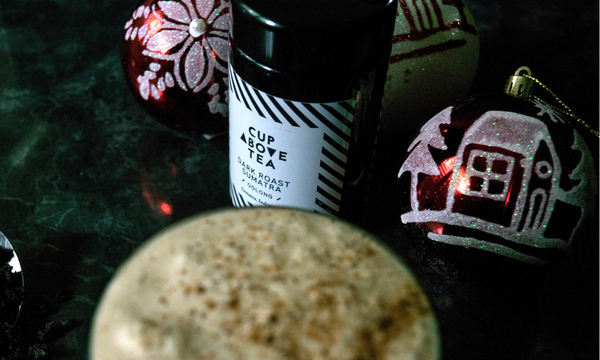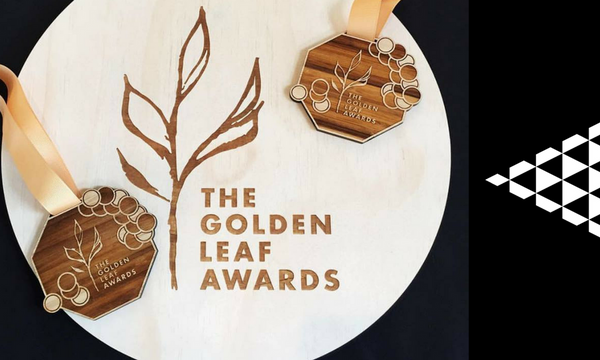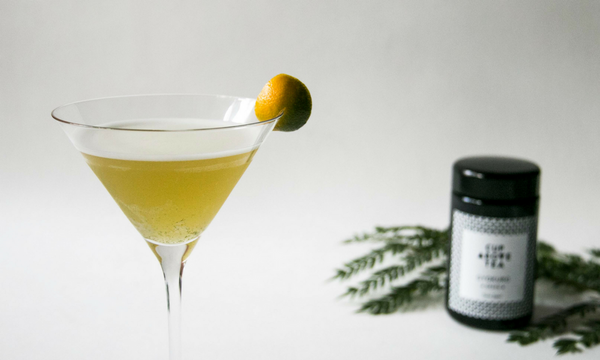Everything you need to know about cold brew tea

Iced tea or cold brew tea is a sensational alternative to hot tea and can really shift the flavour profile of your favourite leaves.
There are a few different ways you can brew chilled teas and the method you choose impacts how your tea will ultimately taste.
Certified Tea Master, Alison Dillon, shares her top tips to help you get the best results and experience the full flavour spectrum.
“There are two main methods to make cold tea and, to the trained palate, the difference in flavour between the two is pronounced. Both methods are really simple and so long as the quality of the tea leaves you’re using is high, you can’t really go too wrong.”

1. Cold press tea or cold brew tea
Take a glass, ceramic or plastic vessel and scoop in double the amount of loose leaf tea you would usually use to make your standard hot cup of tea. Add two cups of cold filtered water (or tap water is fine too if you live in an area where the water is not too ‘hard’). Cover and refrigerate for at least six to eight hours. Leaving overnight will yield the best results.
2. Iced tea
Take around 6 to 10 grams of your favourite high quality loose leaf tea, and add it to a glass or ceramic jug. Heat your water to the correct temperature for the type of tea you’re brewing and pour one cup over the leaves. Steep the leaves for about 6 minutes, then strain out the loose leaves using an infuser basket or mesh strainer. Add a cup of cold water to the hot infusion and then pour into a glass filled with ice.
The extra cup of cold water will help dilute the stronger brew, and the ice will take the remaining heat out of the water. It will also eventually melt into the tea further diluting the flavours, so don’t be shy about making an extra strong brew to start with.

So, which method is best?
"If you don’t need your chilled tea this instant, I’d recommend trying the cold press method and brew you tea cold. Both methods are acceptable, but there is a distinct flavour benefit to cold press. The hot infusion served over ice is a fast process and is designed to be brewed much stronger than a standard cup of tea to make up for the dilution effect when water and ice is added. This style of iced tea brewing makes for a more bitter, tannic drink thanks to the more rapid extraction of flavour from the leave.
"The cold press method is much gentler and there is actually a different chemical reaction going on as the leaves interact and infuse differently in cold water than in hot. The flavour is extracted more consistently, there is more residual sweetness, less astringency and a delightfully refreshing and smooth mouthfeel. It’s also much easier to serve over ice without becoming too watery as you’ve already looked in the flavour ratio.
[gdlr_quote align="center" ]"The cold press method is much gentler and there is actually a different chemical reaction going on as the leaves interact and infuse differently in cold water than in hot".[/gdlr_quote]
There are so many flavour combinations you can experiment with when it comes to cold tea. You can go wild with fruits, herbs and garnish to achieve an end result that’s exactly to your taste. My personal favourite teas for cold press tea are Master Kinezuka’s Houjicha, Master Kurihara’s Gyokuro and Jun Chiyabari’s Himalayan Pine".

Tea Master's Tips for cold brew tea
Loose leaf only
Like with hot tea, loose leaf tea is always the best option for cold brew or iced tea. The higher quality the leaf, the better the flavour of your infusion. Using tea bags or low quality to will result in a flat, dull and less complex beverage. You can use an infuser basket to contain the leaves or simply pour through a sieve of infuser basket once brewed to remove the loose leaves.
Stronger is better
If you are pouring your tea over ice, the cubes will quickly dilute the tea and weaken the flavour. When you’re preparing the tea, use a few extra grams or teaspoons than you would when you make your hot tea.

Water temperature still matters
If you are infusing your tea with hot water and chilling in the fridge, you still need to follow the basics around water temperature – especially if you’re brewing a green or a white tea. Even though the tea will ultimately end up cold, the hot water infusion releases the bitter components of tea and if you burn the leaves at the outset, the bitterness will be extremely pronounced when chilled.
White tea - 65°C
Green tea - 75°C
Yellow tea - 80°C
Oolong tea – 85°C
Black tea – 95 to 100 °C
Some teas perform better iced than others
White and green teas are excellent cold brew options. In fact, research conducted by Elisabetta Venditti reveals that cold brew white tea contains higher antioxidant properties when compared to hot brewed.
[gdlr_quote align="center" ]"White teas yield a delicious creaminess and are incredibly refreshing and aromatic, while on the green tea front, high quality steamed Japanese greens like Gyokuro are outstanding cold pressed. The grassy, vegetal notes really come to life and they have a deliciously rich mouthfeel. When it comes to oolong teas for cold brew, I’ll opt for something that’s around 60% oxidised – I find greener oolongs can be a bit light on, while dark oolongs can head toward the astringent, tannic end of the scale. If I’m using a black for cold brew, I’ll often add a touch of fruit to balance out the naturally bitter elements. For something really interesting, I also add a dash of sparkling mineral water for a nice effervescent kick," Alison Dillon, Certified Tea Master. [/gdlr_quote]

Reuse your leaves
As with hot tea infusions, if you’re using high quality tea, you can re-infuse the leaves multiple times. The same goes for iced tea. Just remember to leave the infusing to brew for a little longer with each repeat of the leaves.
You’re sweet enough
Before adding any sweetener or sugar to your tea, taste it first. Adding sugar masks the nuanced flavour layers. If you really need a kick try experimenting with fruits and berries to impart a touch of sweet to the infusion.

It won’t taste like bottled iced tea
Pretty much every ready-to-drink iced tea you buy in a bottle has been riddled with sugar or artificial sweetener. They are calorie rich and super sweet. If that’s to your taste – no problems – but you won’t get the same results using the methods above.
A note on cold brewing herbals and tisanes
If you are not using tea, and are instead looking to infuse ingredients, like herbs, spices or flowers found in tisanes you need to be aware that unlike tea, these herbals have not had the same high-heat processing which kills bacteria. It’s a good idea to give any tisanes a quick rinse in hot water before you take them through the cold brew process.

Blending ingredients
Let your imagination and palate run wild when playing around with garnishes for your cold brew tea. A handful of ingredients that work well include:
- Sliced citrus
- Muddled berries
- Cucumber
- Diced peach, nectarine or plum
- Muddled herbs (like mint)
- Sprigs of lavender or rosemary
- Edible flowers
- Honey (a great sweetening option)

Leave a comment
We would love to hear what you think. Leave us your thoughts on this article.
You Might Also Like...

Homemade Eggnog Infused with Oolong Tea
Oolong Tea Eggnog - the perfect festive tea-infused treat for the holiday season. It's quick, easy and screams Christmas!


